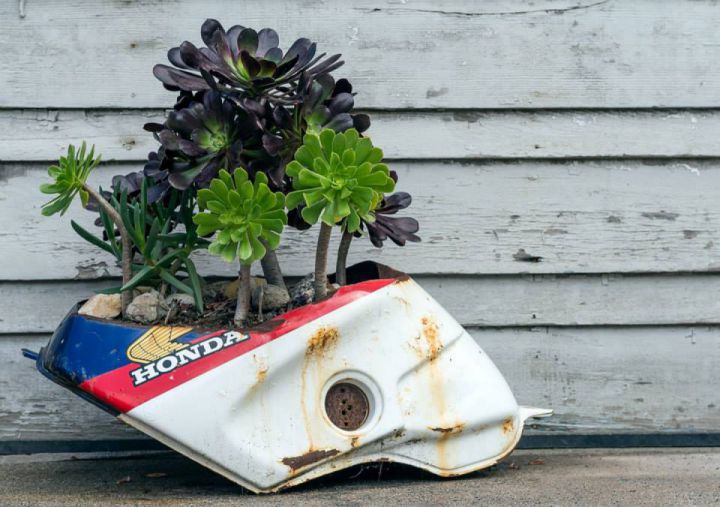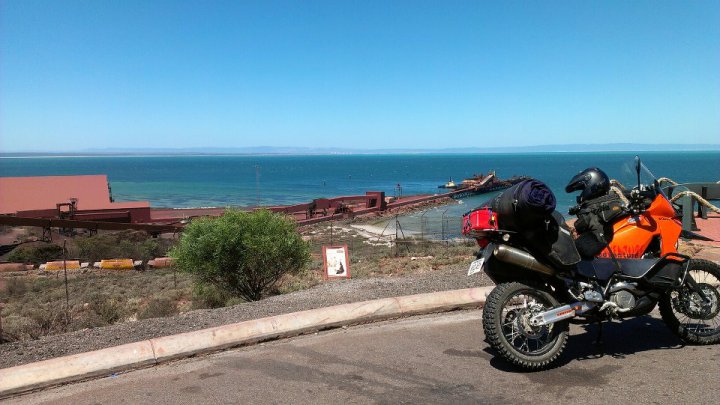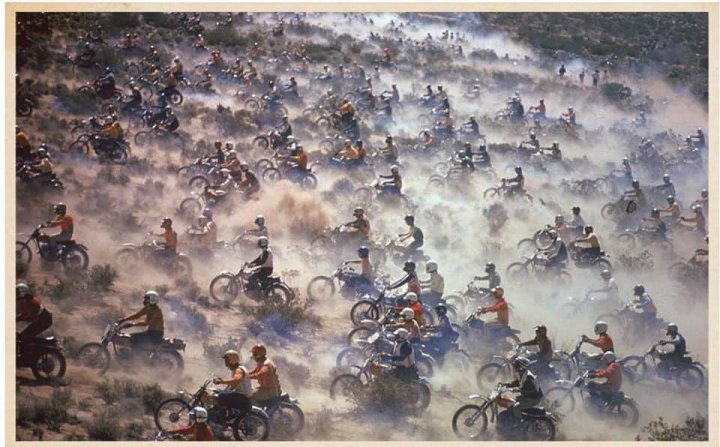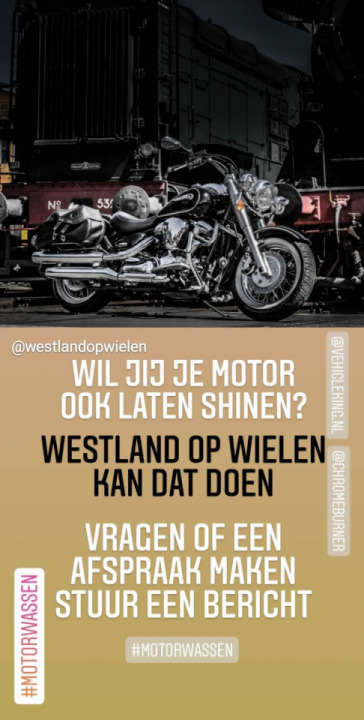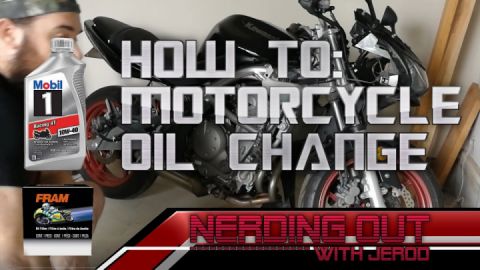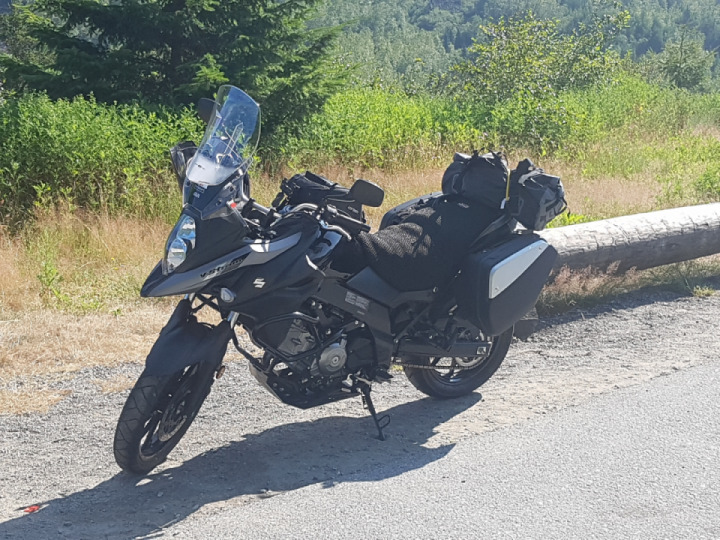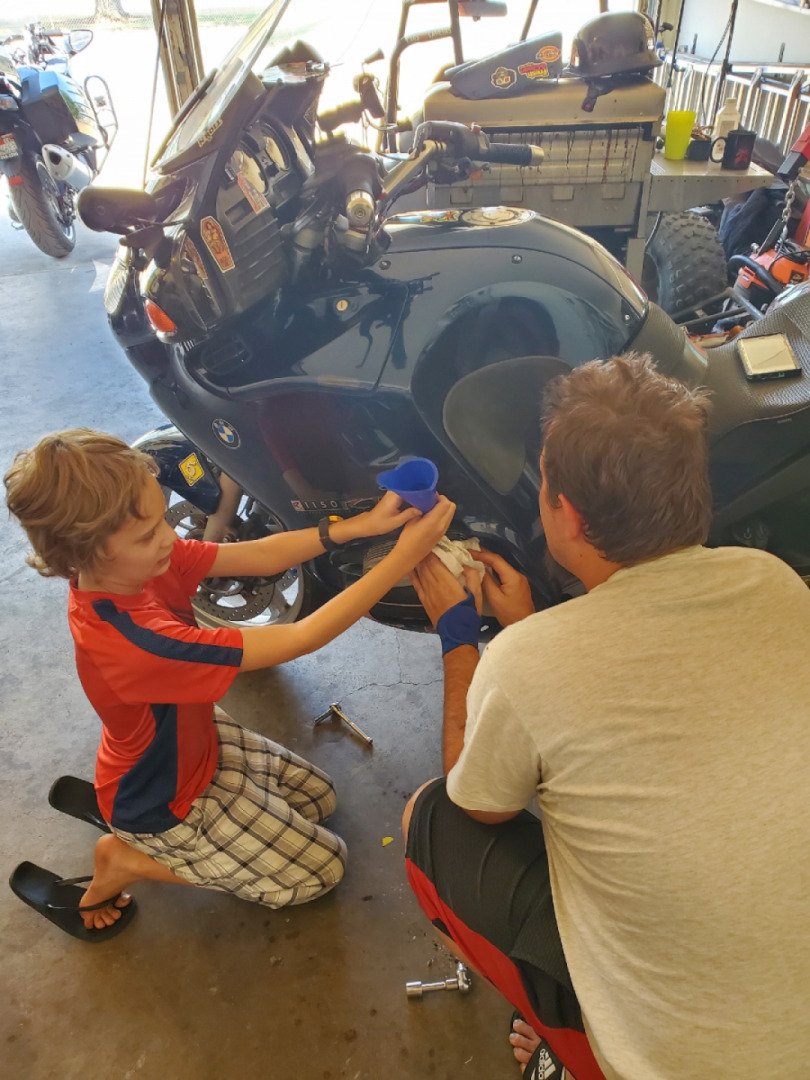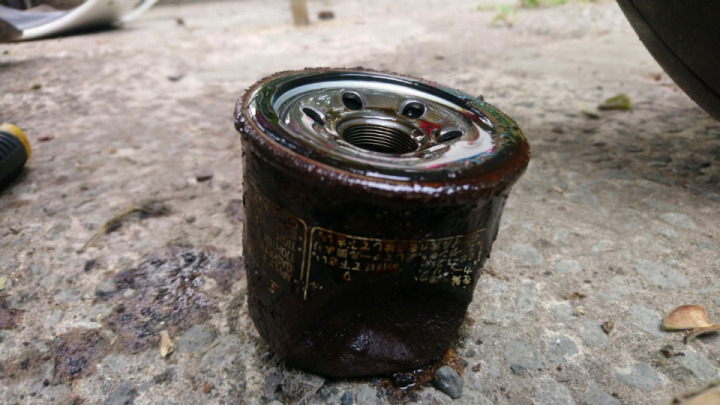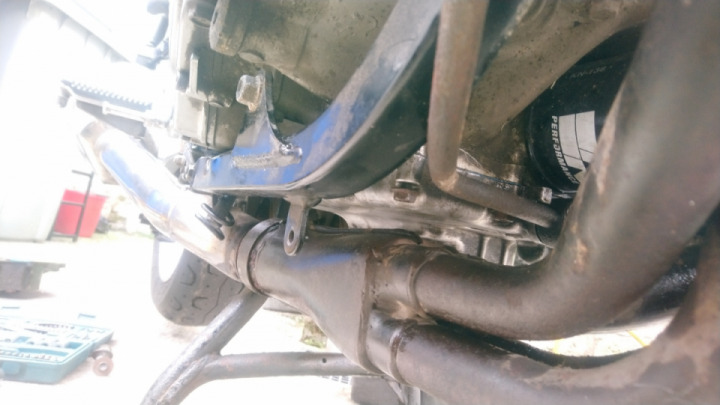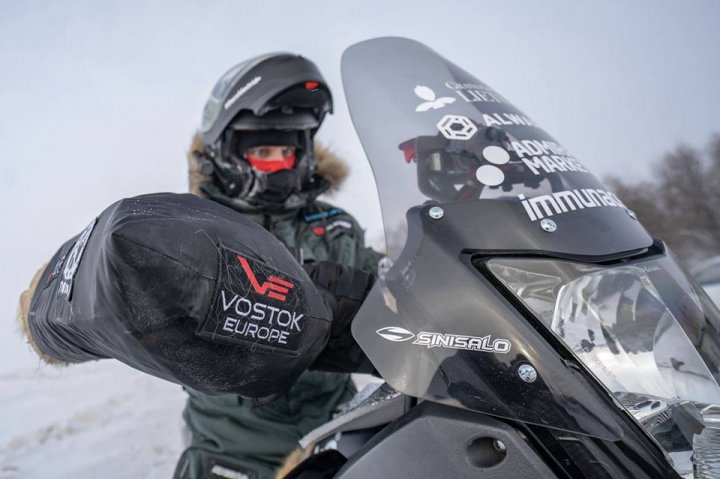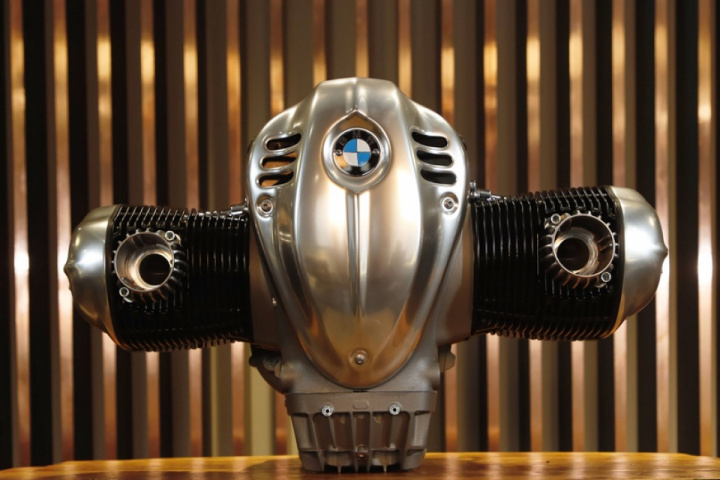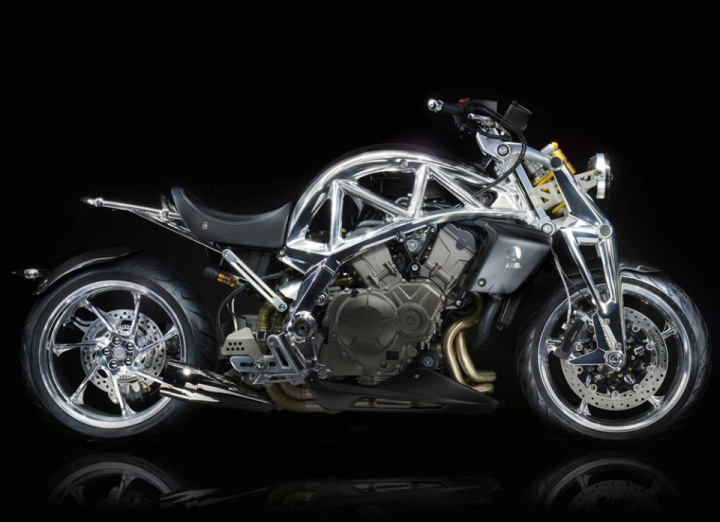
-
 Poster Yamaha YZF R3 “Shark”
Poster Yamaha YZF R3 “Shark” -
 T-shirt "Spider" inspired by Kawasaki ZX14R
T-shirt "Spider" inspired by Kawasaki ZX14R -
 Poster Suzuki GSX-S 1000 “Ram”
Poster Suzuki GSX-S 1000 “Ram” -
 T-shirt Can-Am Spyder F3 2015-2018
T-shirt Can-Am Spyder F3 2015-2018 -
 Set of 3 stickers Honda Africa Twin 2016-2019 “Mustang”
Set of 3 stickers Honda Africa Twin 2016-2019 “Mustang” -
 Set of 3 stickers Honda Grom(MSX125) "Society"
Set of 3 stickers Honda Grom(MSX125) "Society" -
 Poster Triumph Daytona 675 “Dragon”
Poster Triumph Daytona 675 “Dragon” -
 Poster Yamaha Tracer 9 GT “Dragon”
Poster Yamaha Tracer 9 GT “Dragon” -
 Hoodie Yamaha MT- 07 “Ant”
Hoodie Yamaha MT- 07 “Ant” -
 Hoodie Triumph Street Triple S 660 “Wasp”
Hoodie Triumph Street Triple S 660 “Wasp”
“What kind of oil should I use?” - practically every day I hear such questions.
Let's figure it out and rely solely on the data provided by the motorcycle manufacturer and the oil itself.
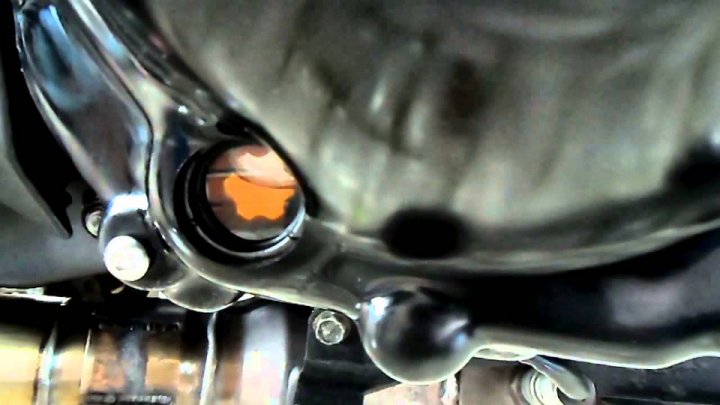
So let’s start!
This topic is really multifaceted, so we need to set limits. And we will not consider sports specialization, such as oil for a track. It’s a specific topic, and I will say only one thing, that the oil there is used not by mileage, but by moto-hours, and sometimes after a weekend it is fully worked out and requires a second replacement.
So what should we start with? Let’s define, what’s your motorcycle? I mean, the type of engine. And in general, why does it need oil?
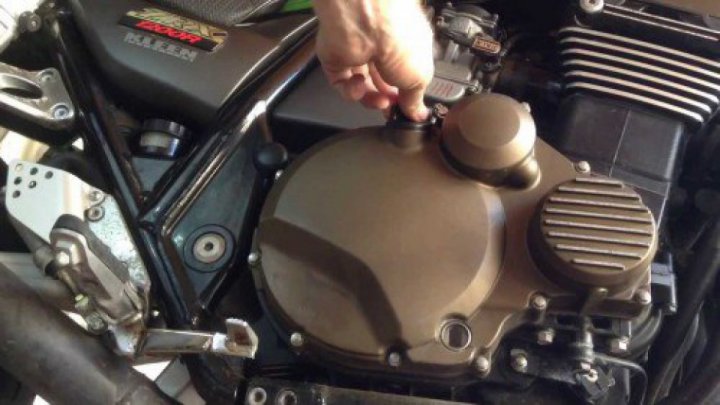
According to the types of engine, there are motorcycles – with a small cubic capacity (up to 350cc), with medium capacity (from 350cc to 900cc) and with large capacity (above 900cc).
Types of cooling can be air, air-oil, liquid.
The engines can be low-speed (up to 4000 rpm), medium-speed (from 4000 to 8000 rpm), high-speed (from 8000 to 13000rpm), and sports (up to 24000rpm).
And now about the oil. What good job should it do? And what shouldn’t be done??
There is a concept - oil degradation. In the process of exploitation, additives burn out from the oil, and more often than not it is uneven, because of what its acidity grows and properties are lost.
Reducing the amount of liquid oil in the engine is called "oil fumes". Time also does not spare it, and the oil loses its properties. There is also an evaporation effect, this is a twofold thing, since old engines imply oil mist lubrication of some elements. And useful properties are lubrication of all rotating elements of the engine, preventing their scoring, cooling and lubricating the walls of the cylinders and many other nuances that depend on the specific motor.
So how should we combine all these facts in order to decide what oil to use??? If we compare the large-capacity V-Twin engine with air-oil cooling of a DragStar and the medium-capacity medium-speed liquid-cooling engine of a CBF600, it is necessary to pour 10w-40 and forget about it. But let's analyze the Service Manual of both motorcycles and understand everything through their example.
If we check the Lubrication System in the service manual for DragStar 1100, we’ll find the following:
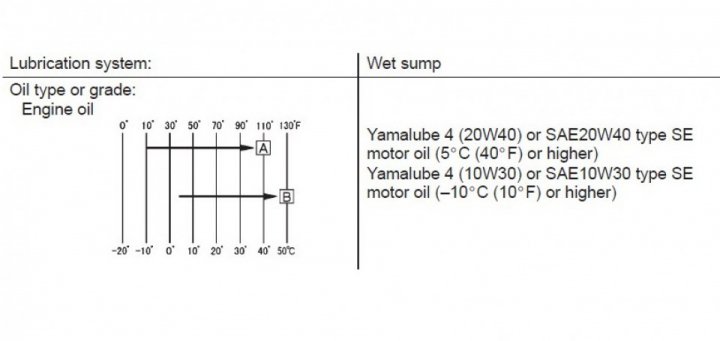
So, what about Honda CBF600?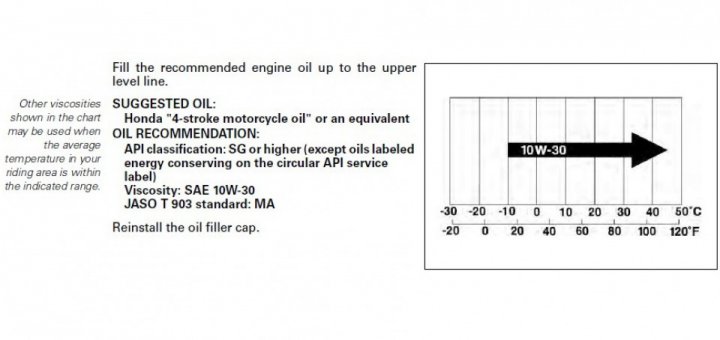
How is it possible? How could the guys from the workshop give such advice not knowing what to advise? Most often this happens, the average approximation works, but not always, and experience can let down even the most talented mechanic.
Let's analyze the information from the diagram, and decide which oil will suit particular examples and why.
A diagram, or an oil map, tells us which oils we can use, or sets the limits of their use. From left to right we see a temperature scale, and an arrow or arrows of oils. The left border is responsible for the W-rating - when the oil is cold and from what temperature it is possible to start the motor painlessly with such an ambient temperature. Focus on the night minimum, the motorcycle was cooled overnight. The right border is the rating of the loaded viscosity and the coefficients for breaking the oil film. This is also our ambient temperature plus a warmed-up engine at full speed. The arrow means that the limit is higher than it was on the map.
The DragStar engine is with loaded clutch, low-speed, air-oil cooling. And most often this engine requires a rating above 10W, and the hotter, the more. When the temperature outside is about -10 degrees, the motor will run at 10W-30, because it's liquid and the oil pump will cope and will not take too much power to pump oil. But as soon as the heat comes, the manufacturer simply jumps over the 15W rating and immediately says - use 20W-40. With such loads and temperatures, it will be perfect. When it’s cold outside, (you are unlikely to ride at -10, but spring or autumn frosts may well give close temperatures), it will be liquid enough to run, but in warm weather it will become too fluid, the oil pressure will drop, which will reduce the overall lubricity. Therefore, we recommend 20W-40, so that it does not burn under the pistons and maintain normal pressure, because it is more viscous.
And what about CBF? Why does the manufacturer insist that you can use only 10w-30? Yes, because all the oil channels of this motor are specifically designed for this viscosity. Jets that spray on the pistons from below will simply not be effective with another viscosity. I watched the oil pressed under the filter when 15w-40 was poured into it, which was too viscous even on the thirty-degree heat.
And what about the DragStar? & Can I fill it with 15w-40 or 15w-60? Let’s take a look at the diagram again, 15w will fall in the temperature range from 0 degrees, the upper 40 corresponds to the map. So 15w-40 can safely operate from spring to the average temperature of about +28. But I won’t advise to use 15w-50 and 60. On the map, these numbers do not exist, and if the 15w-50 can have a positive effect, the 15w-60 can give excess pressure, load on the pump drive and control valves, after all the oil filter membrane may not be designed for this and will be in constant opening, without filtering dirt from the oil.
Are there universal motors? Of course. Let's look at the manual for the Suzuki GSF 1250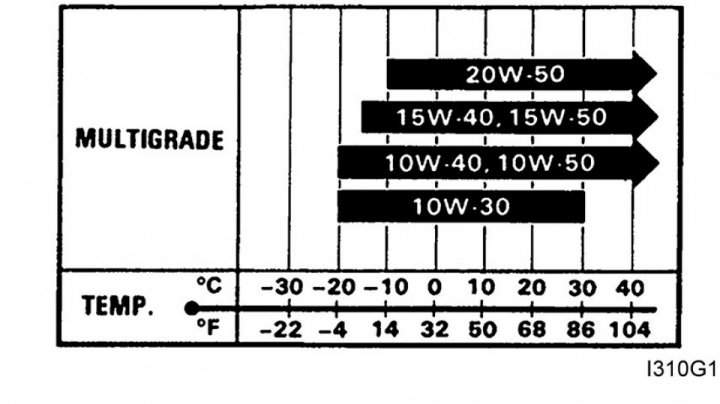
Here is the list of oils from 10w-30 to 20w-50.
So you can use any oil, but observe the terms! If 10w-30 can only be used in a limited temperature range from -20 degrees (!!!) and up to medium loads, then 10w-40 and 10w-50 can be used on all cylinders! With 15w-50 this motor works quieter, especially in the heat, so in spring and late autumn I poured synthetic Ipone Fullpower Katana 10w-50, for summer I used 15w-50. Notice, please, I could afford any oil, but it's hard to buy synthetic 20w-50 of my favorite brand, and most often oil with such a viscosity is mineral water or semi-synthetic, but I did not pour 15w-60, because 60 simply is not in the map. The manufacturer has already tested everything and made recommendations. Just follow them.
So we finally figured everything out with viscosity.
JASO rating.
So, following the instructions above, it turns out that in the air-oil BMW R1200 engine it is necessary to pour motorcycle semi-synthetic 15w-50. And here it is not necessary. You can use even automobile oil. We must clearly understand how your gearbox and clutch are lubricated. If you have a clutch in the oil bath and the box is washed with the same oil as the cpg of the engine, it's better to use motorcycle oil, with a lower content of antifriction additive (to reduce clutch slip and reduce oil burn on the wheels) and with increased transmission properties (for efficient lubrication of the gearbox and easier switching). On the example of the BMW engine, we have a dry grip, and the box is lubricated by its own transmission oil. In such a motor it is necessary to pour just high-quality automobile oil, and there will be only advantages from this.
In this case, what distinguishes the motorcycle oil from the usual motorcycle one? JASO rating of the Japanese moto federation. Rating B - suitable for dry-clutch motorcycles, but also for a combined gearbox. Rating MA - suitable for motorcycles with clutch in the oil bath and a single lubrication system with a gearbox. Rating MA2 - suitable for extremely stressed motors and motorsports. These ratings you can find on almost any oil related to motorcycles. And if you do not have a Chinese motorcycle, it is better to use oil of the MA2 rating, it will better protect your motor and extend the service life.
API rating.
This is the most important indicator of the quality and properties of the oil. Its main characteristics determine nevertheless not the viscosity, as it is commonly believed, but the API. It is marked with two Latin letters, the first of which is S. It dictates the properties and parameters of the oil. And usually, oil with a new rating, exceeds the oil of the previous generation. Let's go directly to the site api.org.
SN – current status - Introduced in October 2010, designed to provide improved high temperature deposit protection for pistons, more stringent sludge control, and seal compatibility. API SN with Resource Conserving matches ILSAC GF-5 by combining API SN performance with improved fuel economy, turbocharger protection, emission control system compatibility, and protection of engines operating on ethanol-containing fuels up to E85.
SM – current status - For 2010 and older automotive engines.
SL – current status - For 2004 and older automotive engines.
SJ – current status - For 2001 and older automotive engines.
SH – obsolete status - CAUTION: Not suitable for use in most gasoline-powered automotive engines built after 1996. May not provide adequate protection against build-up of engine sludge, oxidation, or wear.
SG – obsolete status - CAUTION: Not suitable for use in most gasoline-powered automotive engines built after 1993. May not provide adequate protection against build-up of engine sludge, oxidation, or wear.
Everything isn’t too simple here, look at the can of your oil, and then again on the manual. On the canister there can be both the marking SL and SN. In this case, the motorcycle of 2013, (we will use the manual of the same gsf1250), asks to use SF / SG or SJ / SL. That is, we are again given a lower border.
We look at the oil when buying, and choose the oil with the highest API rating. Let's choose the oil in the nearest motorcycle store, for example, the most popular MOTUL 7100 10w-50, its API is SN, it's cool for motorcycle oil. But if you tear off the outer layer of the label, you’ll find the instruction under it. And oops! The service life is 3 years from the date of its production. We look at the date of the oil spill – and it is 2016. There are only a few months left before it expires. And the manufacturer does not recommend using the oil after the expiration date. It is extremely oxidized and stops working as it should. Earlier, about 5 years ago, when Motul rating did not exceed SH / SJ, the expiration date was 5 years, but it was sacrificed to the result. What should you do if the expiration date is not written? According to the SAE standard, it is 5 years. But usually it is written in small print and away from the eyes.
Now let’s check some common situations.
"I filled the oil, rode 500 km and it's already dirty! Should I change it again?” - No! If you correctly drained the oil and changed the filter, everything is fine. This is one of the main properties of the oil – to clean the engine. If it is clean for a long time, then I would be worry, this probably means that its cleaning properties are low, and it can accumulate somewhere in the form of "toffee". Here is a photo of this "wrong honey".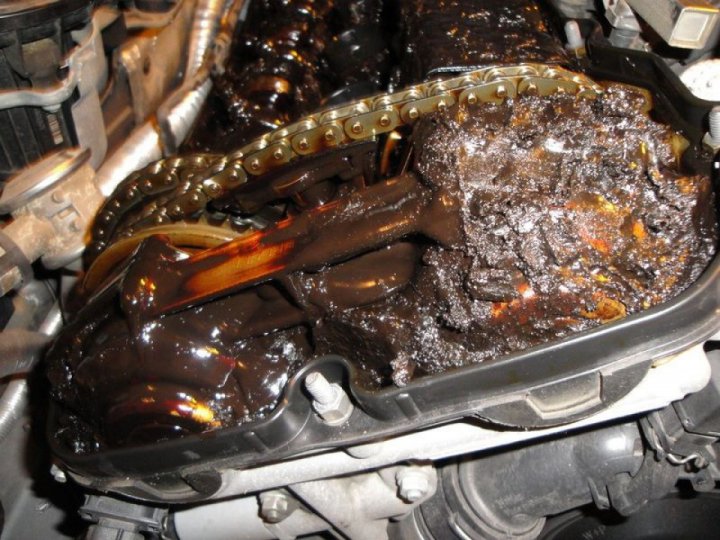
German Castrol for motorcycles is one of the very worthy oils, along with Ipone, LiquiMoly, BelRay.
In general, if the oil darkens quickly, but isn’t eaten - it should be so.
How often should I change the oil? Once in 5000-6000km. If the manufacturer recommends once in 10,000km, this is already programmed aging. If there is a liter or a liter and a half of the oil on the manual, there is likely to be a figure from 1000km to 3000km.
You can not compare the motor of a motorcycle with an automobile, if it’s not Gold Wing. The load in a motorcycle is more than in a car in 2-3 times, so the life of the oil is less. And after the expiration of such a run, or a year's time, it must be changed.
We always change oil with the filter, without forgetting to fill the external filter-jar with oil and grease the rubber band. Cartridge filter is not necessary to fill, it will permeate itself. It is necessary not to feed the motor with bubbles at the first start and not to get quick but noticeable damages that will affect later.
And what if the engine actually needs to be cleaned? Should I use washing? Ladies and gentlemen, this happens very rarely, for example, if the clutch completely burned. If there is a possibility not to use a special washing oil - do not use it. It is better to take a can of not expensive automotive oil, with the same base as yours (synthetic or semi-synthetic, and even more liquid, as for example, 5w-40), fill it without changing the filter, start on idle and warm the engine, not losing the exhaust pipe above 2-3 thousand. Then merge the oil and change the filter. This will clean the motor of pieces of carbon and burned discs.
And what kind of oil can be poured into the motorcycle motor in an emergency situation? If we have a combined lubrication of the entire engine, transmission and couplings, then it is better to choose the oil more carefully. If you find that you are on the road, and you are running out of the oil, and you can’t find the motorcycle oil, you can use almost any oil you’ll be able to buy. Yes, it's much better to buy the same brand and the same viscosity, and for sure diesel oil will be better (if you choose from automotive). Any oil is better than none. The main thing is not to pour Magnatec in the wet clutch and similar oils with magnetic properties, it adheres to metal discs too active and the clutch can overheat.
Everything else is possible. You can mix oils, synthetic and semi-synthetic, you can mix even various viscosity. But the main thing is to have the oil, as the burning red eye of oil pressure is the inevitable death of your motor.
Briefly about the brands.
I will briefly talk about those brands that I tested personally, and I often see.
LiquiMoly is good average oil, suitable for medium-sized engines, there are no outstanding properties.
Shell and Eni (agip) – cheap and rough oil. Suitable for universal engines, such as Rotax, BMW, or Honda GL1500. Justified economy.
Castrol (German) - chic sports oil, excellent properties for protection, fumes and wear resistance.
Motul 5100 7100 - good wear resistance and protection, but the flash point is too low. It burns very fast, faster than any other. And also it can be oxidized from time very intensely.
Motul 300V - purely sports oil, everything is at the level of the German Castrol and Ipone Fullpower Katana.
Ipone - both synthetic and semi-synthetic products have tremendous protection and wear resistance properties, especially Fullpower Katana, excellent properties for cleaning and fumes. Semi-synthetic products also have a complex for protecting, cleaning and conditioning the engine with large runs. The enveloping properties ensure quiet operation of the motor. The price is reasonable.
BelRay, Repsol - experience and test base is very small.
What do we have in the end?
If you love your motorcycle and are not going to turn it into firewood with a mileage of 60000km, if you value reliable and smooth work, if you want to save it for the next owner in its original form - choose quality oil and with intelligence. Savings are sometimes expensive, the only question is who will pay for it.
As my good friend says: "I know only one thing about the oil. Change it!"


